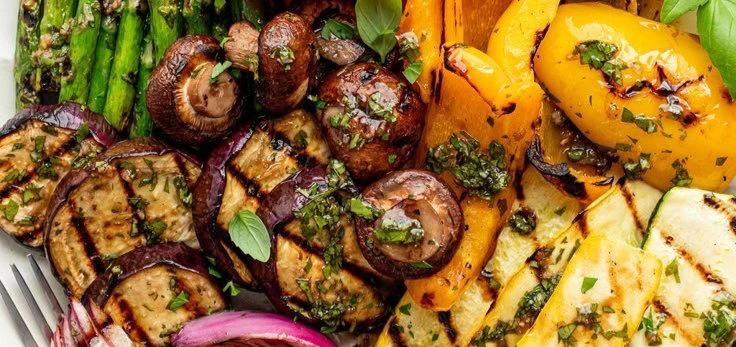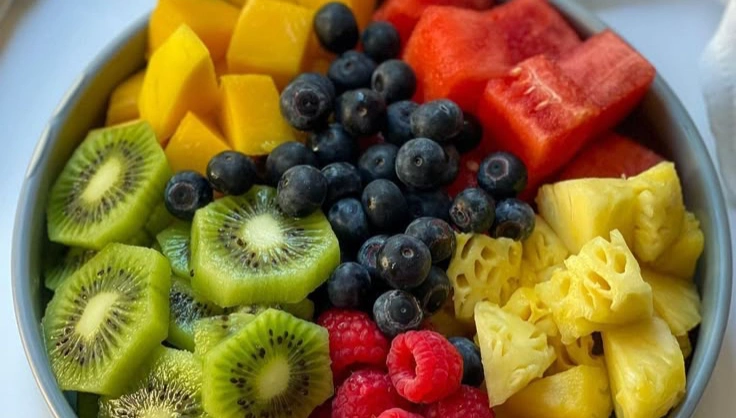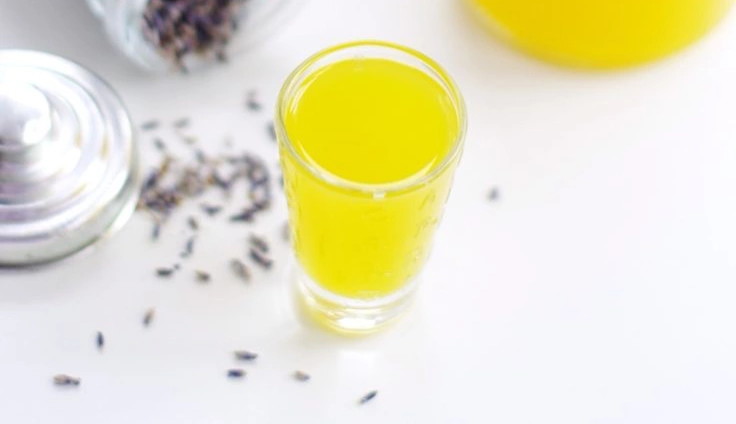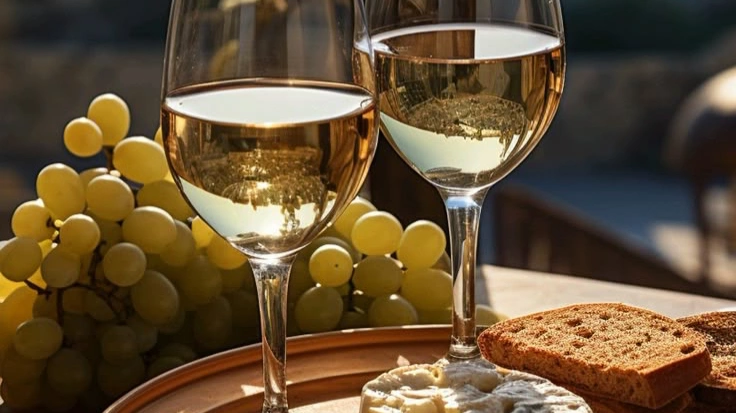Wine & Spirits Posts on Crowch
October 16 marks World Food Day, established in 1979 by the Food and Agriculture Organization of the United Nations (FAO). The day aims to raise awareness about hunger, poverty, and the need to ensure that everyone has access to safe, nutritious, and affordable food.
Why This Day Matters
According to the UN, millions of people worldwide suffer from chronic undernourishment, while in other parts of the world, massive amounts of food are wasted. World Food Day reminds us that access to food is a basic human right, not a privilege.
Themes and Goals
Each year, the day is marked with a theme, such as sustainable agriculture, reducing food waste, or adapting to climate change. These themes emphasize the urgent need for joint action — from policymakers to ordinary citizens.

How to Take Part
- Support charities and initiatives that help those in need.
- Reduce your own food waste by planning meals and storing food properly.
- Choose local and seasonal produce to support farmers and reduce environmental impact.
- Advocate for sustainable farming practices that protect both people and the planet.
The Core Message

World Food Day is not just a date on the calendar — it’s a call to action. Every person can make a difference, whether by making mindful food choices, supporting global anti-hunger campaigns, or promoting sustainability. Together, we can work toward a future where no one goes to bed hungry and where food systems nourish both people and the planet.
Fruits are not just a tasty addition to your diet — they are a powerful source of vitamins, minerals, fiber, and antioxidants. Eating a variety of fruits regularly has a positive impact on overall health, especially digestion.
1. Improved digestion
Fruits are rich in dietary fiber, both soluble and insoluble. Fiber promotes healthy bowel movements, improves intestinal motility, and helps prevent constipation. Apples, pears, plums, figs, and berries are especially effective for digestive health.
2. Gut microbiome support
Some fruits contain natural prebiotics — substances that nourish beneficial gut bacteria. Bananas, apples, and berries help grow healthy gut flora, supporting immunity and nutrient absorption.
3. Anti-inflammatory and antioxidant effects
Citrus fruits, pomegranates, kiwis, grapes, and blueberries are rich in antioxidants, which reduce inflammation and protect cells from damage. This supports not only digestion, but also cardiovascular and neurological health.
4. Natural enzyme aid
Fruits like pineapple and papaya contain digestive enzymes (bromelain and papain) that help break down proteins and make food easier to digest, especially heavy meals.
5. Hydration and lightness
Many fruits — such as watermelon, melon, oranges, and strawberries — are high in water content, helping maintain hydration and promoting smoother digestion.
Incorporating a variety of fruits into your daily meals can boost energy, strengthen immunity, and improve digestive comfort. The key is balance: fruits are best consumed in moderation, ideally in the morning or between meals for maximum benefit.


1. Rich in Dietary Fiber: Fuel for Healthy Digestion
One of the most important benefits of fruits is their high dietary fiber content, including both soluble and insoluble fiber. Soluble fiber (found in apples, citrus fruits, and berries) forms a gel-like substance in the gut, helping to regulate blood sugar levels and cholesterol. Insoluble fiber (present in the skins of pears, plums, and figs) adds bulk to stool and promotes regular bowel movements, easing constipation and supporting a healthy colon. Fiber also improves intestinal motility and can help relieve bloating.
2. Gut Microbiome Support: Nourishing Good Bacteria
A healthy digestive system relies on a balanced gut microbiome — the community of trillions of bacteria living in your intestines. Some fruits are rich in natural prebiotics, substances that feed and support beneficial gut bacteria. Bananas, apples (especially with the skin), and berries are particularly effective in promoting a thriving gut environment. A strong microbiome plays a vital role in immunity, mood regulation, nutrient absorption, and even brain health.
3. Anti-inflammatory and Antioxidant Power
Modern lifestyles often expose our bodies to inflammation and oxidative stress — both of which can damage the gut lining and interfere with digestion. Fruits like blueberries, pomegranates, citrus fruits, grapes, and kiwi are rich in antioxidants such as vitamin C, flavonoids, and polyphenols, which protect gut tissues from inflammation and cellular damage. These fruits also support cardiovascular, skin, and neurological health.
4. Natural Digestive Enzymes
Some fruits contain natural enzymes that assist with digestion, particularly of proteins. Pineapple contains bromelain, and papaya offers papain — both help break down tough protein structures and aid in digesting heavy or protein-rich meals. Including these enzyme-rich fruits in your diet can help ease bloating, gas, and discomfort after meals, especially when eaten fresh.
5. Hydration and Lightness
Fruits with high water content contribute to overall hydration, which is essential for smooth digestion and nutrient transport. Watermelon, cantaloupe, oranges, strawberries, and grapes help keep the digestive tract lubricated and support healthy stool consistency. These fruits are especially beneficial during warm seasons or after intense physical activity, when dehydration can slow digestion and lead to constipation.
✅ Tips for Getting the Most Out of Fruits
- Eat a variety: Different fruits provide different nutrients. Rotate seasonal fruits to maximize health benefits.
- Consume them raw and whole: Whole fruits contain more fiber and nutrients than juices or dried forms.
- Pair wisely: Fruits are generally best eaten on their own or with light meals for optimal digestion.
- Mind timing: Many people find that eating fruits in the morning or between meals supports better digestion and avoids fermentation or bloating.
- Watch portion sizes: Though fruits are healthy, moderation is key — especially with high-sugar varieties like mangoes or grapes.
Limoncello is more than just a liqueur — it’s a symbol of sunshine, simplicity, and the joy of life on the southern coast of Italy. With its bright yellow hue, refreshing citrus aroma, and smooth sweetness, limoncello has become a beloved icon of Italian hospitality, especially in regions like the Amalfi Coast, Sorrento, and the island of Capri.
A Taste of Tradition
The origins of limoncello are shrouded in legend. Some say it was first crafted in a small guesthouse on Capri in the early 20th century, while others believe it dates back even further, prepared by monks or farmers to share with guests and family. Regardless of its exact beginnings, today limoncello is proudly celebrated as a part of Italy’s cultural heritage.
How It’s Made
The magic of limoncello lies in its simplicity — and in the quality of its ingredients. The traditional recipe calls for just four things:
- lemon zest (from untreated, fragrant lemons);
- pure alcohol (typically 95%);
- water;
- sugar.
Only the yellow part of the lemon peel is used, carefully removed to avoid the bitter white pith. The zest is then soaked in alcohol for several days or weeks, allowing the oils to infuse. Once the alcohol is fully flavored, it is mixed with a sugar syrup, filtered, and left to rest. The result is a golden liqueur bursting with natural lemon flavor — sweet, strong, and refreshing.

A Ritual of Refreshment
Limoncello is traditionally served ice cold, straight from the freezer, in small chilled glasses. It’s a classic digestivo, sipped slowly after a meal to aid digestion and cleanse the palate. It’s especially popular during summer evenings, often enjoyed on a terrace overlooking the sea, where the scent of lemon trees lingers in the warm air.
Homemade Variations
In Italy, many families prepare their own limoncello, often handing down secret recipes through generations. Some experiment by adding orange or mandarin peel, others infuse mint or spices. There’s even a creamy version called crema di limoncello, made with milk or cream, offering a rich and silky texture.
Limoncello Today
While mass-produced limoncello is available worldwide, connoisseurs know that the best limoncello is made from sfusato amalfitano — a unique, elongated lemon variety grown on the steep, sun-soaked terraces of the Amalfi Coast. These lemons are prized for their intense aroma, thick skin, and low acidity — perfect for the perfect limoncello.
Limoncello is more than a drink — it’s a postcard from southern Italy in a glass. One sip, and you’re transported to the cliffs of Amalfi, the breeze scented with lemons, and life moving just a little more slowly, and a little more sweetly.

Limoncello is more than just a liqueur — it’s a symbol of sunshine, simplicity, and the joyful spirit of southern Italy. With its vibrant golden hue, refreshing citrus aroma, and smooth, syrupy sweetness, limoncello captures the very essence of the Mediterranean lifestyle. It’s not only a drink but a cultural expression, especially beloved in regions like the Amalfi Coast, Sorrento, Positano, and the island of Capri, where lemon trees flourish on sun-drenched hillsides and the sea sparkles in the distance.
🍋 A Taste of Tradition
The origins of limoncello are as colorful and storied as the coastline it comes from. Some say it was invented in a family-run guesthouse on Capri in the early 1900s, offered as a welcome drink to guests. Others claim it was created by monks or fishermen in coastal villages who used it to warm themselves during cool evenings. While the true story remains a mystery, what’s certain is that limoncello has become a cherished part of Italian culinary heritage — a ritual, a gift, and a gesture of heartfelt hospitality.
✨ The Magic of Simplicity
What makes limoncello so special is not just its flavor, but its simplicity — and the care with which it’s made. The traditional recipe calls for just four pure ingredients:
- Lemon zest (from untreated, fragrant lemons, often peeled by hand)
- Pure alcohol (usually around 95% proof)
- Water
- Sugar
The zest is steeped in alcohol for days or even weeks, drawing out the essential oils and vibrant color. Then, a simple syrup of water and sugar is added, resulting in a drink that’s sweet yet tangy, smooth yet invigorating — like liquid sunshine in a glass.
🧊 A Ritual of Refreshment
Limoncello is traditionally served ice-cold, directly from the freezer, in small chilled glasses — never with ice, and never warm. It’s typically enjoyed as a digestivo, sipped slowly after meals to aid digestion and cleanse the palate. The experience is as important as the drink itself: imagine sipping limoncello on a stone terrace overlooking the Tyrrhenian Sea, the scent of lemon trees in the evening breeze, laughter in the air, and time moving just a bit more gently
Winemaking in Italy is one of the oldest and most respected traditions in the world. Over thousands of years, it has become deeply embedded in the country's culture and identity. With diverse regions, microclimates, and grape varieties, Italian wines offer an unparalleled range of flavors and styles. From Tuscany and Piedmont to Sicily and Apulia, every region brings something unique to the table.
The winemaking process in Italy blends time-honored traditions with modern innovations. It all begins with the grape harvest, which is done either by hand or mechanically, depending on the vineyard and wine type. Choosing the right time to harvest is essential for achieving the desired sugar and acidity levels.
After harvesting, grapes are cleaned, destemmed, and gently crushed. For white wines, the juice is quickly separated from the skins to produce a clear, fresh wine. In red winemaking, the fermentation occurs with the grape skins, which gives the wine its deep color, aroma, and tannins.
Fermentation is a crucial step in which yeast converts sugar into alcohol. This can last from a few days to several weeks depending on the type of wine. Next comes aging, which may take place in oak barrels to enhance complexity and body, or in stainless steel tanks to preserve crispness and fruit character.
Finally, the wine is clarified, stabilized, and bottled. Some wines are further aged in bottles to allow the flavors to mature and integrate.
Italy is home to iconic grape varieties such as Sangiovese, Nebbiolo, Barbera, Montepulciano, Pinot Grigio, and Trebbiano. Each variety, shaped by its terroir, tells its own story through the wine it becomes — a story of land, climate, tradition, and passion.


Winemaking in Italy is not just an agricultural process — it is a profound cultural tradition, a living art, and a vital thread in the fabric of Italian identity. With a history dating back over 4,000 years, Italy stands as one of the world’s oldest and most respected wine-producing nations. Its landscapes — from sun-soaked coastal plains to misty alpine valleys — give rise to one of the most diverse and expressive wine cultures on the planet.
Italy boasts over 20 distinct wine regions, each with its own unique grape varieties, microclimates, soil types (terroir), and winemaking styles. From the rolling hills of Tuscany to the majestic vineyards of Piedmont, from the volcanic soils of Sicily to the sun-baked plains of Apulia, every bottle of Italian wine carries the soul of its region.
🍇 The Winemaking Process: A Balance of Tradition and Innovation
The journey of wine begins in the vineyard. Harvest season, typically from August to October, is a critical time. Many producers still harvest by hand, ensuring only the ripest grapes are selected, while larger vineyards may use mechanized methods. Timing is everything — grapes must be picked at the perfect moment to balance sugar levels, acidity, and flavor.
Once harvested, the grapes are cleaned, destemmed, and gently crushed. For white wines, the juice is quickly separated from the skins to produce a clear, crisp wine that emphasizes freshness and acidity. In contrast, red wines are fermented with the skins and seeds, allowing the wine to extract color, tannins, and aroma compounds that define its structure and complexity.
🧪 Fermentation and Aging: The Art Behind the Science
Fermentation is the magical transformation where natural or added yeast converts the grape sugars into alcohol. This can last anywhere from a few days to several weeks, depending on the grape, climate, and desired style. Winemakers often influence the flavor profile at this stage by adjusting temperature, fermentation vessel (stainless steel vs. oak), and the length of skin contact.
Following fermentation, the wine enters the aging phase, which can last a few months to several years. Wine may be aged in:
- Stainless steel tanks to preserve purity, fruitiness, and freshness
- Concrete vats for thermal stability and micro-oxygenation
- Oak barrels, which add vanilla, spice, and structural complexityThe choice depends on the desired character of the wine.
Some wines — particularly in regions like Barolo or Brunello di Montalcino — require extended aging by law to develop their full expression. Aging can take place in barrels, bottles, or both, allowing flavors to integrate and tannins to soften.
🍷 Bottling and Beyond
Before bottling, the wine is clarified and stabilized, ensuring it is free of sediments and microbiological faults. After bottling, some wines are further aged, while others are meant to be enjoyed young and vibrant. In Italy, even this final stage is done with reverence — reflecting the country’s belief that wine is not just a product, but a story.
🇮🇹 Italy’s Grape Varieties: A Heritage of Flavor
Italy is home to over 500 native grape varieties, more than any other country. Some of the most celebrated include:
- Sangiovese – the backbone of Chianti and Brunello
- Nebbiolo – famed for Barolo and Barbaresco, complex and age-worthy
- Barbera – juicy and approachable, with bright acidity
- Montepulciano – bold, rustic, and full-bodied
- Pinot Grigio – fresh, floral, and globally beloved
- Trebbiano – light, versatile, and widely planted
Each variety reflects the history, soil, sun, and soul of its region. These grapes aren’t just cultivated — they are respected, celebrated, and passed down like family traditions.
In Italy, wine is not only consumed — it is lived. It accompanies meals, marks celebrations, honors the harvest, and brings people together. From the small family-run vineyards nestled on hillside terraces to world-renowned estates producing internationally acclaimed labels, winemaking in Italy is a harmonious blend of craftsmanship, heritage, and passion.
To drink Italian wine is to sip centuries of culture — and to taste the land, love, and labor that brought it into being.